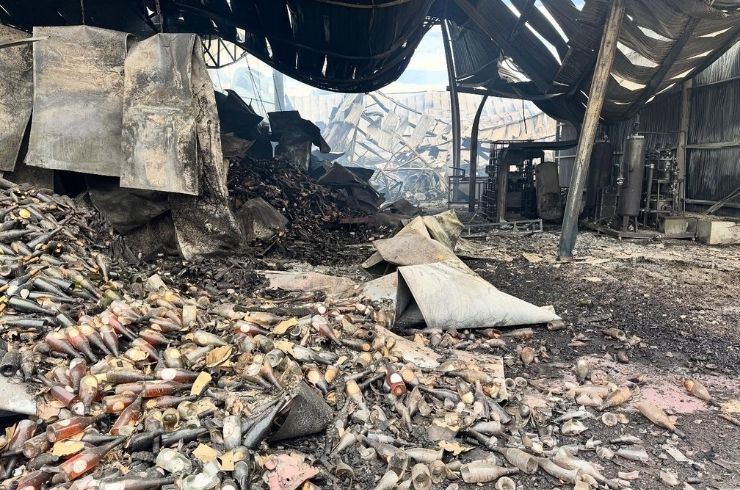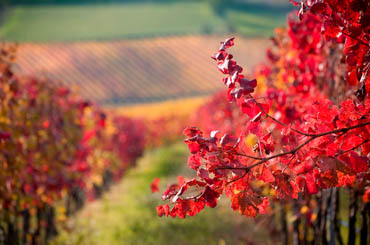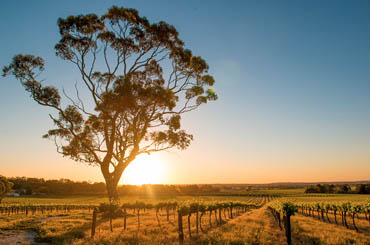Red wines
Bordeaux
The majority of these are cabernet sauvignon–dominant, with lesser amounts of merlot, cabernet franc and petit verdot – but always some; these are informally called Left Bank, meaning they come from the left (or western) bank of the Gironde River, and merlot/cabernet franc–dominant if they come from Saint-Émilion or Pomerol, the right (eastern) bank. None of the Bordeaux wines is 100% cabernet sauvignon, which is made extensively in Australia and California’s Napa Valley. But if you compare an Australian cabernet sauvignon with a Haut Médoc or Graves wine of similar age, the Australian wine will be smoother, less tannic, and have more obvious berry fruit flavours. On the other side, the French (Bordeaux) wine will have more complexity and structure conferred by the terroir and climate, and expressed through the tannins (and new oak) in the wine.Burgundy
Red Burgundy is 100% pinot noir, and its Australian counterparts are likewise 100% pinot noir. The colour of Burgundy is always far lighter in depth than that of Bordeaux and the hue has more red than purple. It also changes more quickly, with red/brown notes appearing, but this does not mean the wine is past its best; often the contrary is the case.
The most simple rule is to regard the colour of Burgundy as unimportant and no guide to its quality. Australian pinot noir from its cool regions (particularly southern Victoria and Tasmania) has similar characteristics. For both Burgundy and Australian pinot noir the aroma – the perfume – of the bouquet is of extreme importance. The Burgundians say, ‘Get the bouquet right, and the palate will look after itself’; Bordeaux winemakers take precisely the opposite view – ‘Get the palate right, and the bouquet will look after itself.’
This does not mean the palate as a whole is irrelevant for Burgundy. The finish and aftertaste are as important as the bouquet. While pinot noir has far less tannin in its skins than cabernet sauvignon, and is lighter-bodied, the palate is long, and the flavours expand on the finish and aftertaste. The expression often used is ‘opening like a peacock’s tail’.
All these characteristics are as true of high-quality Australian pinot noir as they are of Burgundy.
Rhône Valley
Syrah (or shiraz, the same grape) is chiefly grown in the northern end of the Rhône Valley; in the south it is either not used at all or blended with up to 12 other varieties. The greatest examples of syrah are grown on the Hill of Hermitage, and although the number of producers is relatively small, their fame is great. The wine is multilayered, deep in colour and full of black fruit flavours, allied with touches of spice and pepper, and (in the case of the famous house of Guigal) high-quality new oak. The style has a lot of similarities with Australia’s best known shiraz, Penfolds Grange.
Throughout much of the 20th century, syrah received little attention outside of the northern Rhône Valley and South Australia (the Barossa Valley in particular), but in the wake of Robert Parker Jr’s discovery of the great wines of the Rhône Valley, and of the many Barossa Valley shirazs made from vines up to or over 100 years old, there has been a rapid increase in plantings around the world. However, the Barossa Valley, the Clare Valley, McLaren Vale, Coonawarra, Central Victoria and the Hunter Valley all have 100-year-old shiraz vines, some up to 150 years old. It is impossible for any other country or region to catch up.
White wines
Burgundy
White Burgundy (always 100% chardonnay) is generally accepted as the greatest white wine in the world, especially its Grand Crus, headed by Le Montrachet. These Grand Crus have a power, depth and length equal to or greater than that of Red Burgundy Grand Crus (pinot noir). Moreover, they have the complexity more frequently found in red wine; while 100% new French oak plays some role in this, it is the terroir of the communes of Puligny-Montrachet and Chassagne-Montrachet that invests these wines with so much character.
However, the story is somewhat complicated by the fact that the communes of Corton-Charlemagne (further north) and Chablis (far further north, but technically still part of Burgundy) also produce Grand Crus (likewise 100% chardonnay). These are less powerful and rich than those of Puligny and Chassagne, but do have great length and a minerally purity to their make-up. Especially in Chablis, new oak is used sparingly.
The best cool-region chardonnays of Australia can be surprisingly similar to the style and quality of Burgundy. Margaret River can emulate the Montrachet family, the Yarra Valley Corton-Charlemagne and Chablis. It is with this grape that the greatest changes (and improvements) in Australia’s wines have taken place over the past decade.
Alsace
Riesling grown and made in Alsace is usually fermented to dryness, and can have considerable alcohol and body. Dry Australian rieslings are finer, lighter-bodied and more precise, and when young are less complex than those of Alsace. But with 10–15 years’ bottle age (especially under screwcap) the Australian wines from the Clare and Eden valleys change dramatically, with far greater mouthfeel and richness than they had in their youth, closing the gap with Alsace.The other face of riesling is that provided by Germany. While there are dry rieslings from the Rheingau and other regions, many place the rieslings of the Mosel
Valley at the top of the quality tree. These may be Kabinett, where the sweetness of a low level of unfermented sugar is so well balanced by acidity you barely taste the sweetness. As the level of unfermented sugar increases, with Spätlese and Auslese the most commonly encountered wines, the sweetness is increasingly\ obvious, but the acidity always leaves the mouth fresh.
Australia is making more rieslings in these styles, with the Mosel Kabinett model most frequently encountered. The style is different, and it would be foolish to pretend that Australia can equal the wines of the Mosel Valley in terms of quality, but they are nonetheless very good. On the other hand, Tasmania is producing some exceptional botrytis rieslings with levels up to and beyond the sweetness of Auslese.
Sauternes
The semillon sauvignon blanc botrytis wines of Sauternes (Bordeaux) is made world famous by Château d’Yquem. There are, of course, many other outstanding producers of the Sauternes style in Bordeaux. But for over 30 years, one Australian maker in particular has produced exceptional botrytis semillon wines. This is De Bortoli, its wine known as Noble One. It may not have the final complexity of great Sauternes, but it is certainly every bit as luscious and rich.Hunter Valley Semillon
There really is no equivalent to semillon from the Hunter Valley from any other wine-producing country or region in the world. The wine typically is 10–10.5% alc/vol, is fermented dry, and bottled within three months or so of vintage. At this point in its life it is virtually colourless, and only experts can assess the quality, so discreet is the aroma and flavour. But over the next 5–10 years, the colour turns to a glowing yellow-green, the aroma and flavour to honey and butter on lightly browned toast, all the while kept fresh and bracing by its acidity.
Champagne
The climate and terroir of Champagne is, of course, unique, as is the 200+ years of experience in making the wine. It may be blanc de blanc (100% chardonnay), blanc de noir (100% pinot noir), a blend of chardonnay and pinot noir (usually for vintage champagne) or a blend of chardonnay, pinot noir and pinot meunier (usually for non-vintage). The Champenoise have invested more time in visiting all the markets of the world than any other region of France has, and their hospitality in receiving visitors to Champagne is legendary. All of this puts this great wine on a throne all of its own, one that will last to the end of time.Australia has been making sparkling wine for over 150 years, using the traditional method (méthode champenoise) for its best wines. At the 1855 International Paris Exhibition, which directly gave rise to the classification of Bordeaux wines into five growths, Hunter Valley winemaker James King entered various wines, including a sparkling wine which the judges said, ‘Has a bouquet, body and flavour equal to the finest champagnes’. This wine was chosen to be served to Napoleon III during the closing ceremony of the exhibition.
Attention swung to Victoria in the later part of the century, and remained there until the 1990s, when Tasmania proved beyond doubt that it is the finest Australian region for the production of méthode champenoise sparkling wines. These are kept for up to 12 years on lees, and are every bit as complex as vintage champagne. Blanc de blanc, rose, non-vintage and vintage wines respectively made from chardonnay, pinot noir and pinot meunier are all produced.
Sherry and Port
These are fortified wines. Australia’s most famous is the 100-year-old Seppeltsfield Para Liqueur, only sold when it is (at least) 100 years old; it has no equal elsewhere in the world. One-hundred-year-old Madeira is superb, with incredible length and intensity, but not the same richness and body as the Para Liqueur. Likewise, the old muscats and muscadelles/topaques from North East Victoria have no corresponding styles in either Spain or Portugal. Malaga (from Spain) is the closest to these wines in terms of richness, but cannot equal their complexity.







